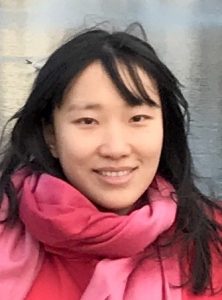
Ke Fang, Assistant Professor of Physics, WIPAC.
Hometown: Huangshan, China
Educational/professional background:
I studied physics as an undergrad at the University of Science and Technology of China. Then I moved to the United States for graduate school and got a PhD in astrophysics at the University of Chicago in 2015. After that, I moved to the University of Maryland and the Goddard Space Flight Center for a Joint Space-Science Institute fellowship. In 2018, I got a NASA Einstein fellowship when I moved to Stanford University in California.
Previous position:
NASA Einstein Fellow, Stanford University
How did you get into your field of research?
When I started graduate school, high-energy astrophysics was rather new; it’s a field that has quickly grown in the past decade or so. High-energy astrophysics traditionally refers to astrophysics with X-ray observations, because X-rays are higher in energy compared to the optical band that astronomers traditionally use. But in the last few years, high-energy astrophysics has had another burst of delving into even higher energies. When we move up in energy, by millions or billions, we see many new sources that were previously not observable in the X-ray band, or different aspects of sources that were previously seen at lower energies. And there are so many unknowns in this field; we can see surprising things at the highest energies, and many of those observations are discoveries. I think that’s really intriguing.
What attracted you to UW–Madison?
I think it’s pretty fair to say that WIPAC — with IceCube, CTA, HAWC, Fermi-LAT, ARA, and IceCube-Gen2 — is now the leader of particle astrophysics in the world. I think there’s a close match between my expertise and what is currently being done at WIPAC, and I’m excited about joining the department and joining this explorations of higher and higher energy neutrinos and gamma rays.
What was your first visit to campus like?
The campus itself is very beautiful. I had been to UW–Madison many times because of IceCube. When I was in Chicago for graduate school, I visited UW–Madison multiple times, and throughout the years there have been all kinds of meetings and workshops that drive people in this field to Madison because it’s the center for particle astrophysics.
What’s one thing you hope students who take a class with you will come away with?
The content you learn from a class is limited, but the contexts where you could apply the knowledge are unlimited.
Do you feel your work relates in any way to the Wisconsin Idea? If so, please describe how.
Yes. What we’re doing here is essentially related to educating the broad public about science and about how we can explore the universe and understand the cosmos and where life comes from. In the past, I have been engaged in several public talks and public education activities, and I look forward to doing similar things at WIPAC.
What’s something interesting about your area of expertise you can share that will make us sound smarter at parties?
Our universe does not shine only with light; it also sends out particles and other waves. With the help of many observatories in the world, including the IceCube and HAWC observatories that I work on, we can see the universe in “colors” that human eyes are not sensitive to. In this way, the universe looks drastically different.
Is there a way your field of study can help the world endure and recover from the COVID-19 pandemic that has affected the health, finances and lifestyle of so many?
Many astronomers and particle physicists have access to the world’s largest telescopes and experiments—some of them are in space, some are underground, some are in Antarctica. Most of us don’t travel to the experimental sites to work. We were used to remote collaboration long before the pandemic. Our experience suggests that remote working can be productive, as long as we have patience and communication.
Hobbies/other interests:
Cooking! I like to explore different things. I come from China, so Chinese cuisine is what I started from when I just moved to the United States. But after all these years, I’m getting more exposed to different types of cuisines and starting to explore more, like with Thai and Italian. When I go to nice restaurants, I try to remember the name of the dish and find the recipe online.